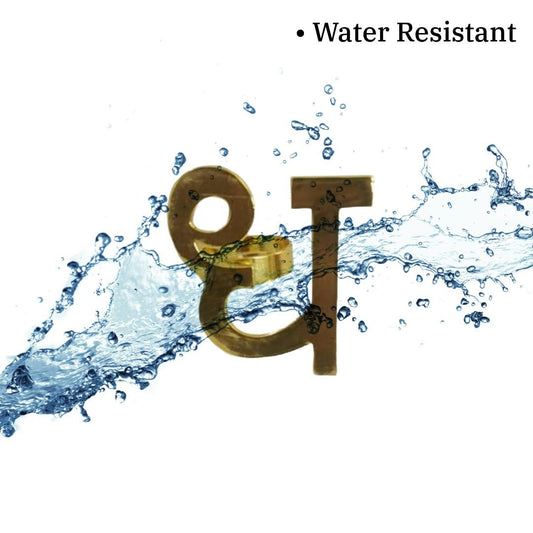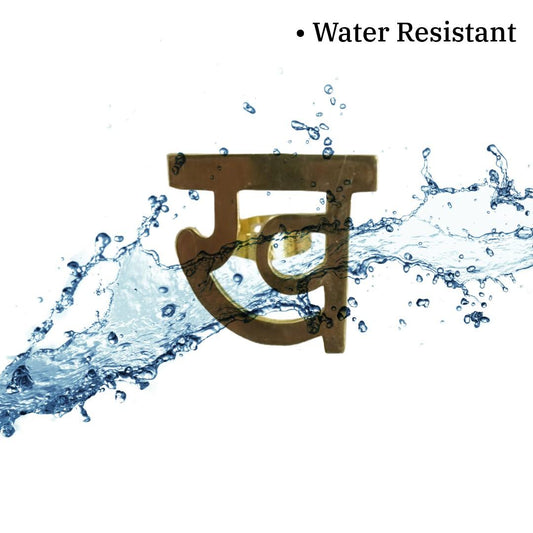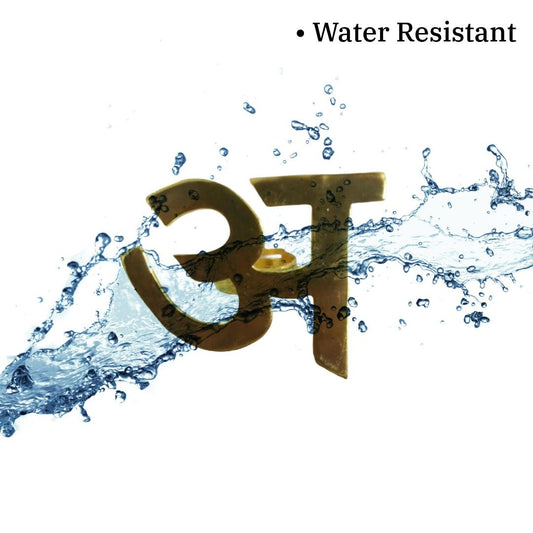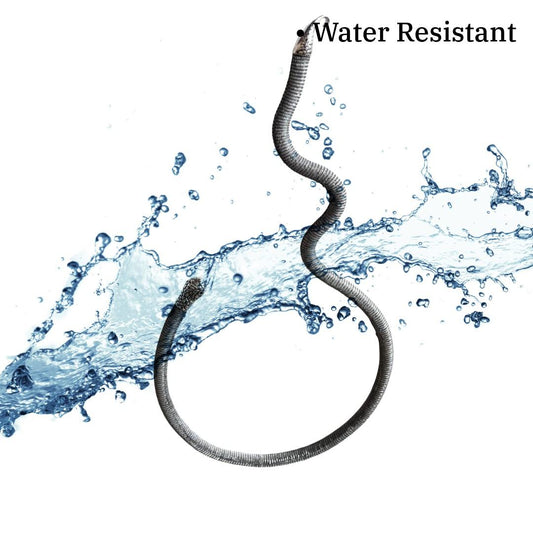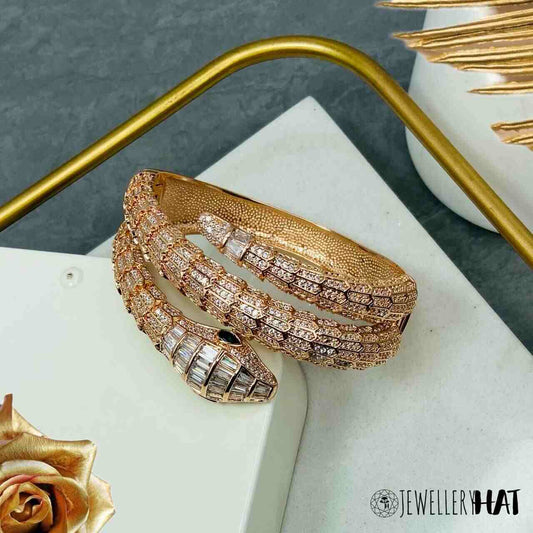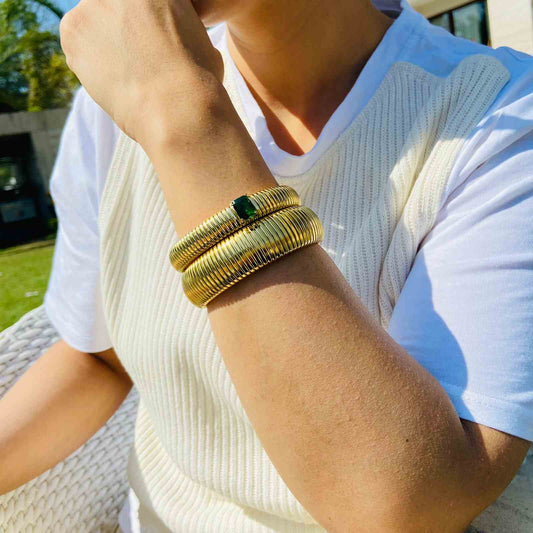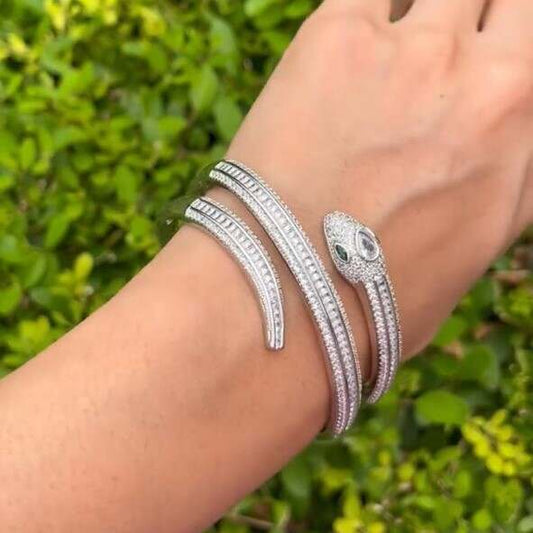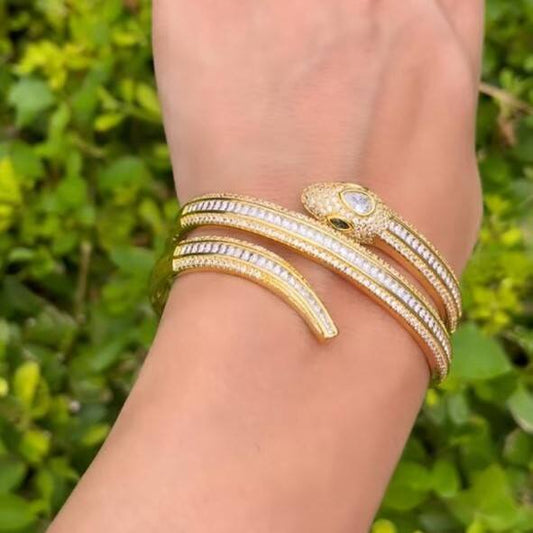Jewelry is not just an accessory but a cherished asset that often carries sentimental and financial value. One common issue that can affect the long-term enjoyment of your jewelry is tarnishing. Knowing how to tell if jewelry will tarnish can help you make informed decisions when purchasing and caring for your pieces. In this guide, we'll delve into the signs that indicate whether jewelry is likely to tarnish, the science behind tarnishing, and practical tips to prevent it. Additionally, we’ll highlight how Jewellery Hat, India's fastest-growing fashion jewelry brand, addresses tarnishing with its anti-tarnish technology and lifetime replacement warranty on polishing.
Understanding Tarnishing: The Basics
Before exploring how to tell if jewelry will tarnish, it's essential to understand what tarnish is and what causes it.
What is Tarnish?
Tarnish is a chemical reaction that affects metals, resulting in a dull, discolored layer on their surface. This reaction often occurs when metals interact with elements like sulfur, oxygen, and moisture.
- Oxidation: Metals react with oxygen in the air to form oxides, leading to tarnish. For example, silver reacts with oxygen to create silver oxide, causing a blackened appearance.
- Sulfur Compounds: Sulfur compounds, found in pollutants or certain foods, can react with metals such as silver and copper, leading to tarnish.
- Moisture: High humidity can speed up the tarnishing process by promoting oxidation and corrosion.
Understanding these basic factors helps in how to tell if jewelry will tarnish and provides insight into tarnish prevention.
How to Tell If Jewelry Will Tarnish
Here are several methods to determine if jewelry is likely to tarnish, providing you with the information needed to make informed decisions.
1. Identify the Metal Composition
The composition of the metal plays a significant role in determining its tarnish susceptibility.
- Silver: Sterling silver, which contains 92.5% silver and 7.5% other metals (usually copper), is highly prone to tarnishing. Copper reacts with sulfur compounds in the air, leading to tarnish.
- Copper: Copper is very reactive with oxygen and sulfur, making it prone to tarnishing quickly.
- Gold: Pure gold (24K) is less likely to tarnish due to its resistance to oxidation. However, gold alloys (such as 14K or 18K) can tarnish depending on the other metals mixed with it.
- Stainless Steel: Stainless steel, especially when combined with anti-tarnish technology, is highly resistant to tarnishing due to its chromium content. Jewellery Hat uses stainless steel with anti-tarnish properties to ensure durability and a long-lasting shine.
- Platinum: Platinum is highly resistant to tarnishing and corrosion, making it a durable choice for fine jewelry.
When evaluating how to tell if jewelry will tarnish, checking the metal composition is a critical first step.
2. Examine the Finish and Coating
The finish and coating of jewelry can influence its likelihood of tarnishing.
- Rhodium Plating: Rhodium plating provides a protective layer that helps prevent tarnish. Jewelry with this coating is less likely to tarnish.
- Gold Plating: Gold-plated jewelry may tarnish over time, especially if the plating is thin or starts to wear off.
- Antique Finishes: Antique or oxidized finishes are designed to look tarnished but may also be more prone to further tarnishing if not maintained properly.
Understanding the finish and coating helps in how to tell if jewelry will tarnish and informs you about potential maintenance needs.
3. Check for Manufacturer’s Information
Manufacturers often provide details about the tarnish resistance of their jewelry.
- Product Descriptions: Review product descriptions or labels to determine if the jewelry is treated with anti-tarnish technology.
- Care Instructions: Look for care instructions that outline how to prevent tarnish or maintain the jewelry's appearance.
Jewellery Hat provides anti-tarnish jewelry with a lifetime replacement warranty on polishing, reflecting their dedication to maintaining the beauty of their pieces.
4. Consider Environmental Factors
Environmental factors play a significant role in tarnishing.
- Humidity Levels: High humidity can accelerate tarnishing. Jewelry exposed to moisture or stored in a humid environment is more likely to tarnish.
- Exposure to Chemicals: Jewelry that comes into contact with chemicals such as perfumes, lotions, and cleaning products is more susceptible to tarnishing.
- Air Quality: Polluted air containing sulfur compounds can increase the likelihood of tarnishing, particularly for metals like silver and copper.
Assessing these environmental factors is crucial in how to tell if jewelry will tarnish and helps in taking preventive measures.
5. Assess the Frequency of Wear
The frequency with which you wear your jewelry can affect its likelihood of tarnishing.
- Daily Wear: Jewelry worn daily is more exposed to sweat, oils, and environmental pollutants, which can accelerate tarnishing.
- Occasional Wear: Jewelry worn less frequently may tarnish more slowly if it is stored properly when not in use.
Evaluating how often you wear your jewelry is a key aspect of how to tell if jewelry will tarnish and can guide you in proper maintenance and storage.
The Science Behind Tarnish Prevention
Tarnish can diminish the beauty and value of jewelry, but understanding the scientific methods for preventing it can help you keep your pieces looking their best. Here’s a detailed explanation of the key techniques used to manage tarnish effectively:
1. Barrier Coatings
Barrier coatings are a primary method for preventing tarnish on jewelry. These coatings provide a protective layer over the metal, creating a shield against tarnishing agents.
Function of Barrier Coatings
Barrier coatings function by acting as a physical shield that prevents tarnishing agents from coming into direct contact with the metal. This protective layer helps maintain the jewelry's appearance and delays or prevents tarnish formation.
Mechanism of Barrier Coatings
-
Clear Lacquers: Clear lacquers are applied to the surface of the metal, forming a thin, transparent layer. This layer acts as a barrier that blocks oxygen, moisture, and sulfur compounds from interacting with the metal. By preventing these elements from reaching the metal, clear lacquers help prevent oxidation and tarnish.
-
Rhodium Plating: Rhodium plating involves applying a thin layer of rhodium, a precious metal, over the base metal. Rhodium is highly resistant to tarnish and corrosion. The plating creates a durable shield that protects the underlying metal from tarnishing agents. Additionally, rhodium plating enhances the jewelry’s shine and provides a bright, white finish.
-
Specialized Coatings: Some jewelry pieces are treated with advanced coatings designed specifically to resist tarnishing. These coatings are engineered to repel sulfur compounds and other corrosive substances, ensuring long-lasting protection.
Barrier coatings are highly effective in maintaining the jewelry’s appearance, but they may need to be reapplied or refreshed over time to ensure continued protection.
2. Anti-Tarnish Treatments
Anti-tarnish treatments involve applying chemicals designed to inhibit the tarnish formation process. These treatments help neutralize the corrosive elements that cause tarnish and provide an additional layer of protection.
Function of Anti-Tarnish Treatments
Anti-tarnish treatments are designed to neutralize sulfur compounds and other corrosive elements that contribute to tarnish. By doing so, these treatments help preserve the metal's appearance and extend the life of the jewelry.
Mechanism of Anti-Tarnish Treatments
-
Anti-Tarnish Cloths: These cloths are impregnated with anti-tarnish agents that help neutralize sulfur compounds and remove tarnish. When you wipe your jewelry with an anti-tarnish cloth, the cloth's chemical agents interact with the metal surface to prevent tarnishing and restore shine.
-
Anti-Tarnish Dips: Anti-tarnish dips are liquid solutions that contain chemicals designed to neutralize tarnishing agents. Jewelry is briefly submerged in the solution, which removes tarnish and creates a protective layer on the metal surface. This layer helps prevent future tarnish formation.
-
Anti-Tarnish Sprays: Similar to dips, anti-tarnish sprays contain chemicals that prevent tarnish. The spray is applied to the jewelry, creating a protective barrier that repels tarnishing agents.
Anti-tarnish treatments are typically used to clean and protect jewelry. They are effective for immediate tarnish removal and long-term protection but may require periodic reapplication to maintain effectiveness.
3. Proper Storage
Proper storage is essential for minimizing tarnish risk. Storing jewelry in controlled environments helps reduce its exposure to tarnishing agents such as moisture, pollutants, and chemicals.
Function of Proper Storage
Proper storage functions by creating an environment that limits exposure to elements that contribute to tarnish. By minimizing contact with moisture and pollutants, proper storage helps maintain the jewelry's appearance and prevents tarnishing.
Methods for Proper Storage
-
Anti-Tarnish Pouches: Anti-tarnish pouches are specially designed to neutralize tarnish-causing agents. These pouches contain chemicals that absorb sulfur compounds and other pollutants that can lead to tarnish. Storing jewelry in these pouches provides an effective way to protect your pieces from tarnishing.
-
Anti-Tarnish Cloths: Anti-tarnish cloths can be used to wrap or line jewelry storage boxes. These cloths help absorb moisture and neutralize tarnishing agents, providing additional protection for your jewelry.
-
Cool, Dry Place: Store jewelry in a cool, dry environment to reduce exposure to moisture and humidity, which can accelerate tarnishing. Avoid storing jewelry in damp or humid areas, such as bathrooms, and keep it away from direct sunlight.
Proper storage is a proactive approach to preventing tarnish and maintaining the beauty of your jewelry.
4. Regular Cleaning
Regular cleaning is a crucial aspect of managing tarnish. Cleaning removes contaminants that can contribute to tarnish and helps maintain the jewelry’s appearance.
Function of Regular Cleaning
Regular cleaning functions by removing oils, dirt, and other substances that can accelerate tarnishing. By keeping jewelry clean, you prevent the buildup of materials that can contribute to tarnish formation.
Methods for Regular Cleaning
-
Mild Soap and Water: For routine cleaning, use mild soap and lukewarm water to gently clean jewelry. Soak the jewelry in the solution and use a soft brush or cloth to remove dirt and grime. Rinse thoroughly and dry with a clean, soft cloth.
-
Specialized Jewelry Cleaners: Specialized jewelry cleaners are formulated to remove tarnish and clean different types of metals. Follow the manufacturer's instructions for use, and ensure that the cleaner is suitable for your jewelry's material.
-
Avoid Abrasive Materials: When cleaning jewelry, avoid using abrasive materials or harsh chemicals that can damage the metal or its coatings. Stick to gentle cleaning methods to preserve the jewelry's appearance.
Regular cleaning helps maintain the jewelry’s shine and prevents the accumulation of tarnish-causing substances.
Effective Methods to Prevent Tarnishing
Here are practical tips for how to tell if jewelry will tarnish and prevent tarnishing effectively:
1. Choose Anti-Tarnish Jewelry
Opt for jewelry with built-in anti-tarnish properties.
- Materials: Stainless steel and rhodium-plated jewelry are excellent choices for their inherent tarnish resistance.
- Brands: Look for brands like Jewellery Hat, which use advanced anti-tarnish technology to keep their jewelry looking new.
2. Use Barrier Coatings
Apply barrier coatings to protect your jewelry from tarnishing.
- Application: Consider using clear lacquers or rhodium plating to create a protective layer on your jewelry.
- Maintenance: Regularly check the coating and reapply as needed to maintain its protective properties.
3. Store Jewelry Properly
Proper storage is crucial in preventing tarnish.
- Anti-Tarnish Pouches: Store your jewelry in pouches that help neutralize tarnish-causing agents.
- Dry Environment: Keep your jewelry in a cool, dry place to reduce exposure to moisture and pollutants.
4. Clean Regularly
Incorporate regular cleaning into your jewelry care routine.
- Gentle Cleaning: Use mild soap and water or specialized cleaners to keep your jewelry free from tarnish-causing contaminants.
- Routine Care: Clean jewelry regularly to prevent the buildup of substances that could accelerate tarnishing.
Jewellery Hat: A Leader in Anti-Tarnish Technology
Jewellery Hat is renowned for its innovative approach to preventing tarnish. As India's fastest-growing fashion jewelry brand, they offer a range of anti-tarnish jewelry that combines style with durability.
1. Premium Stainless Steel
Jewellery Hat utilizes high-quality stainless steel with anti-tarnish properties.
- Corrosion Resistance: The chromium content in stainless steel forms a protective layer that resists tarnishing.
- Durability: Stainless steel maintains its appearance over time, making it ideal for daily wear.
2. Advanced Anti-Tarnish Technology
Jewellery Hat employs cutting-edge anti-tarnish treatments.
- Specialized Coatings: They use advanced coatings to protect jewelry from tarnishing agents.
- Effective Treatments: Their anti-tarnish technology neutralizes sulfur compounds and other corrosive elements.
3. Lifetime Replacement Warranty
Jewellery Hat offers a lifetime replacement warranty on polishing.
- Coverage: This warranty addresses issues related to tarnishing and maintenance, ensuring long-term satisfaction.
- Customer Assurance: It reflects their commitment to quality and customer care.
Conclusion
Knowing how to tell if jewelry will tarnish involves understanding the metal composition, examining finishes and coatings, checking manufacturer information, considering environmental factors, and assessing wear frequency. By applying effective prevention methods such as choosing anti-tarnish jewelry, using barrier coatings, storing jewelry properly, and cleaning regularly, you can maintain the beauty and longevity of your accessories. Jewellery Hat stands out with its commitment to advanced anti-tarnish technology and customer satisfaction, offering jewelry that remains stunning and tarnish-free. Explore their collection to experience the benefits of high-quality, anti-tarnish jewelry and enjoy timeless elegance that lasts.
Contact Us :-







